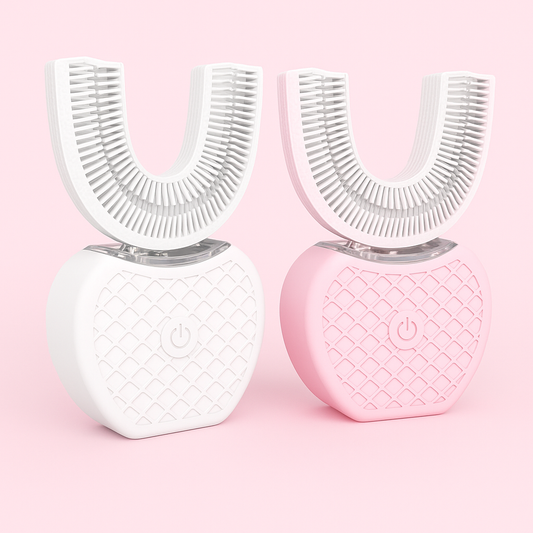Introduction
Travel can disrupt routines, but your oral-care standards dont have to slip when youre away from home. For travelers who prefer fluoride-free products or want the combined benefits of niacinamide and xylitol, there are compact, effective options designed to keep teeth healthier and brighter on the go. This long-form guide explains how fluoride-free whitening works, what niacinamide and xylitol do for oral health, how to choose TSA-friendly formulas, and practical tips for getting the most whitening impact from travel-sized products.
Quick takeaways
- Fluoride-free toothpaste can be a reasonable choice for low-risk individuals, but fluoride remains the gold standard for cavity prevention.
- Niacinamide supports gum health and may reduce inflammation; its a helpful complement but not a replacement for proven whitening agents.
- Xylitol reduces cavity-causing bacteria and supports saliva balance, indirectly helping teeth look and stay healthier.
- For travel, choose low-abrasion, small-format tubes, toothpaste tablets, or sachets that contain xylitol and niacinamide when available.
- When in doubt, consult your dentist about switching to a fluoride-free routine while traveling.
How whitening toothpaste actually works
Most over-the-counter whitening toothpastes do one or more of the following:
- Use gentle abrasives (silica, calcium carbonate) to remove surface stains from coffee, tea, wine, or food.
- Include chemical brighteners or enzymes that help break down stain compounds on the tooth surface.
- Contain peroxide in higher-strength formulations (normally not common in travel-size, fluoride-free pastes) to alter intrinsic tooth color.
- Employ ingredients like polyphosphates that help prevent stain re-deposition.
Important: most whitening toothpastes remove surface stains rather than change the internal color of teeth. For dramatic whitening, professional peroxide treatments are more effective.
Niacinamide in toothpaste: what it does and why it matters
Niacinamide (vitamin B3) has become a trendy ingredient in skincare and is now appearing in oral-care formulations. Its putative benefits for oral health include:
- Anti-inflammatory support: Niacinamide can help soothe inflamed gum tissue and support a healthier gingival environment.
- Barrier support: It may help strengthen mucosal barriers, making gums less reactive to irritants.
- Comfort for sensitive mouths: When combined with low-abrasion formulas, niacinamide may make brushing more comfortable for people with gum sensitivity.
Limitations: Evidence that niacinamide whitens teeth directly is limited. Its main value is promoting healthier gums and a balanced oral environment, which complements stain-removal strategies.
Xylitol: cavities, bacteria, and saliva balance
Xylitol is a naturally occurring sugar alcohol used widely in sugar-free gums and toothpaste. Clinically relevant benefits include:
- Reducing acid-producing bacteria: Xylitol interferes with the ability of certain bacteria to metabolize sugars and adhere to the tooth surface.
- Supporting saliva: Xylitol stimulates saliva flow, which helps neutralize acids and wash away staining agents.
- Lowering cavity risk when used as part of a comprehensive routine.
In travel formulations, xylitol is particularly valuable because it provides bacterial support even when you cant complete a full oral-care routine after meals.
Fluoride-free vs fluoride toothpaste: pros, cons and dental risk
Fluoride is proven to reduce cavities by strengthening enamel and aiding remineralization. Choosing a fluoride-free toothpaste is a personal decision driven by preferences, medical considerations, or temporary situations. Consider these points:
- Pros of fluoride-free: suitable for those avoiding fluoride for personal or health reasons; many fluoride-free formulas include alternative protective ingredients like xylitol, calcium, and phosphate complexes.
- Cons of fluoride-free: may provide less robust protection against demineralization and cavities, especially for high-risk individuals, children, or people with dry mouth.
- Best practice: if you opt for fluoride-free products, complement them with xylitol-containing formulas, impeccable brushing and flossing, and regular dental checkups.
Tip: discuss your cavity risk with a dental professional before switching to fluoride-free toothpaste full-time.
What to look for in a travel-friendly whitening toothpaste
When shopping for a compact toothpaste thats fluoride-free but still effective, use this checklist:
- Ingredient labels that list 'xylitol' and 'niacinamide' prominently if those benefits are desired.
- Low-abrasion formulation (low RDA). Avoid highly abrasive charcoal or heavy polishing pastes for daily use.
- Whitening agents aimed at surface stains: mild silica, baking soda, or enzyme systems rather than harsh abrasives.
- Small, TSA-compliant size: under 3.4 oz (100 mL) for carry-on, or choose toothpaste tablets and sachets for zero-liquid packing.
- Clear claims and transparency: look for brands that explain how their formula works and provide usage guidance.
Travel formats: tubes, tablets, and solid bars
Travelers have several options beyond standard tubes:
- Mini tubes (50 60 mL): Familiar texture and foaming behavior; easy to pack and use.
- Toothpaste tablets: Compressed tablets that you chew and brush with a wet brush; ideal for carry-on and mess-free use.
- Single-use sachets: Pre-measured doses that avoid spills and are excellent for brief trips.
- Solid toothpaste bars: Zero-liquid, eco-friendly options that are compact but require a dry place to store between uses.
How to pack your dental kit for travel
- Use a dedicated pouch: Choose a leakproof toiletry bag with compartments for your brush, floss, and oral rinse.
- Transfer if needed: Put your preferred paste into a small silicone travel tube under 100 mL to comply with TSA carry-on rules.
- Include floss and interdental brushes: Stain removal often requires mechanical cleaning between teeth.
- Add a xylitol gum or mints: Useful after meals when brushing isnt possible; they complement xylitol toothpaste benefits.
- Keep a small mirror or a collapsible cup: Helpful for discreet public brushing in hostels or airports.
Best travel strategies for whitening while on the move
- Brush twice daily for two minutes each time. Even a travel-size paste used consistently is more effective than sporadic stronger treatments.
- Rinse with water after meals when you cant brush; ideally chew xylitol gum to neutralize acids and stimulate saliva.
- Avoid overusing abrasive whitening pastes. Long-term enamel wear increases sensitivity and can worsen yellowing.
- If you use whitening strips or trays, store them flat and keep to recommended wear times to avoid sensitivity while traveling.
Choosing the right ingredients: a deeper dive
Here are common ingredients in fluoride-free whitening toothpastes and what they do:
- Silica and mild abrasives : Remove surface stains with minimal enamel damage when formulated correctly.
- Baking soda (sodium bicarbonate): Mild abrasive and neutralizer of acids; helps brighten surface stains and freshen breath.
- Enzymes: Break down organic stains and biofilm gently without high abrasivity.
- Charcoal: Marketing-popular for stain removal, but can be abrasive and is often discouraged for daily long-term use.
- Polyphosphates: Help prevent stain particles from re-adhering to enamel.
- Niacinamide and xylitol: For gum support and bacterial balance, respectively; not primary whitening agents but valuable for overall oral health.
Real-world product categories and when to pick each
- Everyday travel whitening: Low-abrasion fluoride-free paste with xylitol and mild polishing agents. Choose this for routine stain control and gum health support.
- Sensitive travel formula: Low-abrasion, niacinamide-containing paste that soothes gums and reduces discomfort after long flights or dry mouths.
- Compact minimalist kit: Toothpaste tablets with xylitol and natural mild brighteners; ideal for no-liquid carry-on packing.
- Short-trip intensive: Single-use sachets or a small tube of whitening paste to keep a bright smile for photos or events.
How to use whitening toothpaste safely while traveling
- Brush gently with a soft-bristle brush for two minutes; use small circular motions rather than vigorous scrubbing.
- Floss once daily to remove interproximal staining and plaque that toothpaste alone wont reach.
- Limit whitening paste to twice daily. Overuse increases abrasivity-related wear and sensitivity.
- If sensitivity appears, switch to a sensitivity-focused paste (look for ingredients like potassium nitrate) and consult a dentist if it persists.
Common travel oral-care FAQs
-
Q: Can fluoride-free toothpaste whiten as well as fluoride toothpaste?
A: Whitening depends on abrasives and whitening agents rather than fluoride. Fluoride protects enamel but doesnt inherently whiten. A fluoride-free paste with the right polishing agents can remove surface stains, but fluorides caries protection is a separate benefit. -
Q: Are toothpaste tablets effective for whitening?
A: Yes, many tablets contain mild abrasives and xylitol and perform similarly to paste in stain removal. They are excellent for travel convenience. -
Q: Is it safe to use charcoal toothpaste on vacation?
A: Occasional use is acceptable, but avoid daily use because some charcoal formulations are highly abrasive. -
Q: Can I use toothpaste for zits?
A: No. Despite urban myths, toothpaste is not formulated for acne and can irritate skin. Stick to products intended for dermatologic use.
SEO tips for shoppers: keywords to search and why
When researching travel whitening options online, include search terms that match your needs. Useful keywords include:
- "good whitening toothpaste"
- "toothpaste without fluoride"
- "toothpaste with xylitol"
- "niacinamide toothpaste"
- "best toothpaste for whiter teeth" or "toothpaste whitening best"
- "fluoride toothpaste free" and "toothpaste that whitens teeth"
These search phrases help you find products that match your travel, whitening, and health priorities.
Where to buy curated travel-friendly formulas
For a streamlined shopping experience focused on travel and personal care, explore curated retailers that group compact, effective oral-care products. If you want a convenient starting point for travel-ready, fluoride-free toothpaste options that include xylitol or niacinamide, check curated selections such as best toothpaste for whiter teeth, toothpaste without fluoride, and toothpaste with xylitol on Havana Body. These links lead to handpicked products suited for travel kits and whitening maintenance.
Sample travel packing list for oral health
- Small tube of fluoride-free whitening toothpaste with xylitol or a jar of toothpaste tablets.
- Soft-bristled travel toothbrush or a folding brush.
- Dental floss or interdental brushes.
- Small mouth rinse or a travel mouthwash (if you use one).
- Xylitol gum or mints for after-meal protection.
- Spare toothbrush head or disposable brush for long trips.
Practical scenarios and recommendations
- Business travel: Pack a compact, low-abrasion whitening paste with xylitol for fresh breath and stain control before meetings and photos.
- Adventure travel: Choose toothpaste tablets or sachets to avoid spills and bulky liquids in backpacks.
- Family travel with kids: For children, consult a pediatric dentist before using fluoride-free products; many pediatricians recommend fluoride for cavity prevention unless otherwise advised.
When to seek professional care
Switching toothpaste or trying new whitening practices while traveling is fine for most people, but contact a dental professional if you experience:
- Persistent tooth sensitivity following whitening products.
- New or worsening gum inflammation not relieved by improved hygiene.
- Frequent cavities or other signs of high caries risk.
Conclusion: Keep your smile bright on the go
Travel-ready, fluoride-free toothpastes that pair niacinamide and xylitol can be an excellent choice for people who want to support gum health and reduce bacterial risk while focusing on surface stain removal. Remember that most toothpaste-based whitening targets surface stains and that consistent, gentle brushing plus flossing and hydration are key to maintaining brighter teeth.
If youre ready to update your travel oral-care kit, browse curated travel-friendly whitening and personal-care items, including compact "good whitening toothpaste" options and specialty fluoride-free picks at Havana Body. Explore Havana Bodys selections for travel-sized solutions and discover the best toothpaste for whiter teeth, quality toothpaste without fluoride, and thoughtfully formulated toothpaste with xylitol to keep your teeth healthier and whiter while you travel. Shop now and stock your travel kit for a brighter smile on every trip.


